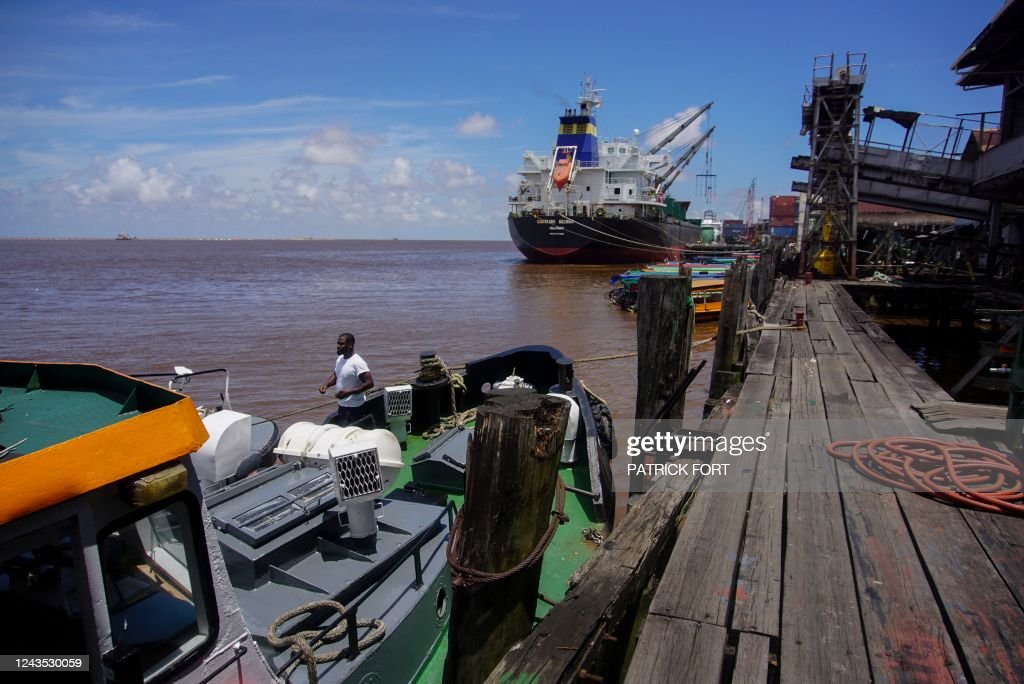News Americas, NEW YORK, NY, Weds. Oct. 12, 2022: If you owned one of the nicest houses in an exclusive neighborhood, would you sell your house for a fraction of what other sellers are receiving?
Guyana is receiving significantly less money from its oil production than other countries. But some Guyanese politicians hide behind the porous façade of the sanctity of contract while others are scared to utter the word renegotiation.
Would any of these politicians sell their house for a fraction of what it is worth? Would they forgo insurance on their house? Of course not! Then it begs the question as to what their secret incentive is to continue to ignore the ever-increasing barrage of reasons of why the Stabroek Block Production Sharing Agreement (PSA) is not up for renegotiation.
Guyana’s oil comes with a combination of low extraction costs and superior oil quality at a very convenient geographic location that makes it a compelling investment opportunity for any oil company in the world. Venezuela, Guyana’s neighbor to the west, harbors one of the largest oil reserves in the world, but its heavy crude is high in sulfur content and expensive to refine compared to Guyana’s light sweet crude.
Furthermore, Guyana is a democracy, and its oil can be shipped from the secure waters of the Caribbean Sea to refineries in Texas. This compares favorably given that a large percentage of the world’s oil comes either from rogue states, such as Russia and Iran, or the Arabian Peninsula, where it has to pass through the hostile Strait of Hurmuz.
Thus, it is astounding that Guyana is slated to receive 14.5% of oil revenues from the Stabroek Block PSA, over the next several years, when an IMF survey several years ago showed the average revenue take for the world’s oil regimes was between 65% to 85%.
The government stated recently in an interview that Guyana would receive over 50% of revenues over the life of the Stabroek Block PSA.
See here https://www.youtube.com/watch?v=kZauAIRnxig&t=1309s
This seems illogical given that Guyana is in a 50/50 profit share with 2% royalty but the oil companies are allowed to recover all their expenses. While there is a monthly 75% cap on expenses claimed, any amount above the 75% cap is allowed to roll forward to future months and years.
The simple equation for profit is revenue minus expenses. There are expenses such as exploration, development, and operational costs that will run in the tens of billions of US dollars. These expenses guarantee that the 50/50 profit share would be applied to less than 100% of revenues. Thus, Guyana’s share of oil revenues would be far lower than 50%.
If we look at the reports the oil companies have released, the approximate break-even costs for the first four Stabroek projects are: Liza Phase 1 break-even is US$35/barrel for 450 million barrels; Liza Phase 2 break-even is US$25/barrel for 600 million barrels; Payara break-even is US$32/barrel for 600 million barrels, and Yellowtail break-even is US$29/barrel for 925 million barrels. That is an average weighted break-even of US$29.82/barrel.
Let’s assume that over the life of the Stabroek Block the average price of Guyana’s Brent crude is about US$100/barrel. If for every barrel, the oil companies can recover US$29.82 as an expense then Guyana’s take would have to be collected from the remaining US$70.18, that is profit oil. The oil companies that have stated for every 25 barrels of profit oil, Guyana would get 14.5 barrels and they would get 10.5 barrels. Thus, Guyana’s share of the US$70.18 profit oil would be US$70.18 * (14.5/25) = US$40.70. That is Guyana receives approximately 41% of oil revenues.
This 41% share is significantly less than the 50% of revenues that are being claimed. One specific figure mentioned by the government was Guyana may get 52% of revenues. The Stabroek block is estimated to contain 11 billion barrels of oil. At US$100/barrel that works out to US$1.1 trillion dollars. A 11% difference, 52% subtract 41%, on total revenues amounts to US$121 billion. That is about US$155,000 dollars for each of the 780,000 people living in Guyana.
How do you explain that to the more than 43% of Guyanese living on US$5.50 a day that their government doesn’t even realize they are getting US$121 billion less than expected?
Ring-fencing is where the expenses of one project cannot be applied to another project. For example, if the Stabroek contract had ring-fencing in place, the FPSO costs associated with Yellowtail cannot be applied to the Liza 1 project.
However, the Stabroek Block lacks ring-fencing. This coupled with the provision that allows the oil companies to roll forward all their expenses that exceed the monthly 75% cap would probably ensure Guyana’s share of oil revenues will hover at 14.5% revenues for decades to come.
Whatever secret incentive motivates the politicians to go around defending the Stabroek Block PSA, one has to question if the politicians even contemplate the astounding amount of money being given away to rich shareholders in the Western countries?
We may receive 14.5% of oil revenues for decades to come in a world where the average share of oil revenues ranges from 65% to 85%. This is stealing from the poor to fatten the rich. Hence, Guyanese should ask these politicians defending the Stabroek Block PSA, if they would sell their mansions for a fraction of what they are worth?
EDITOR’S NOTE: Darshanand Khusial is part of the non-profit Oil and Governance Network and a financial researcher with qualifications in management accounting and securities. He is also an IT expert who once served as the lead designer on the engine behind some of the largest retail sites in the world. He holds a Masters and Bachelors in Computer Engineering from University of Toronto. He has 15 patents granted in eCommerce software, augmented reality, retail, and dental fields.










